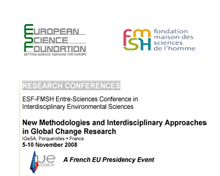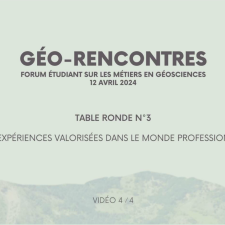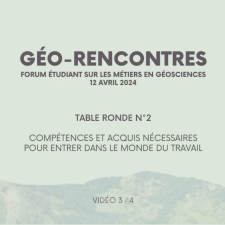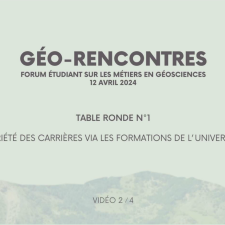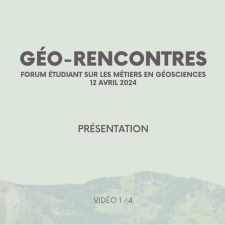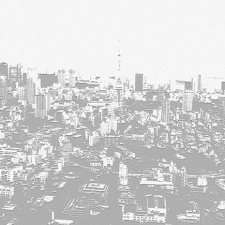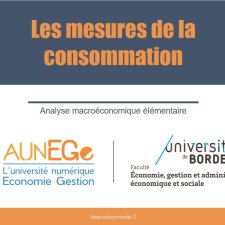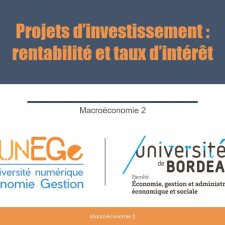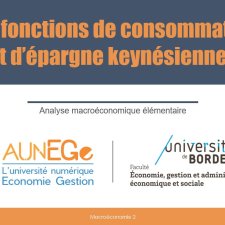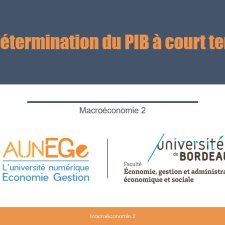Notice
Climatic Hazard Mitigation Through Risk and Resilience Committees in Nepal
- document 1 document 2 document 3
- niveau 1 niveau 2 niveau 3
Descriptif
Nepal lies in an ecologically fragile and seismic region with a history of devastating Glacier Lake Outburst Flood (GLOF), landslides and earthquakes. Increases in temperature could increase the frequency and magnitude of climatic disaster occurrences. Winter snow in Kathmandu in 2007 after nearly 65 years absence, frequent flood events since 2000, and an increased number of glacier lakes in the upper Himalayas indicates that climate change may already be having a significant impact. Disaster events in Nepal are known to impact disproportionately on poor and marginalised people who live in more exposed environments during risky times and without adequate forms of protection. With increasing climatic drivers of disaster events this trend is predicted to increase. The challenge of achieving the Millennium Development Goals (MDGs) in Nepal is therefore also a function of mitigating potentially disastrous effects of climatic change. One small initiative to establish local level Risk and Resilience Committees (RRC) has begun with support from the Department for International Development (DFID) and British Council (DelPHE programme) and may exemplify ways in which increasing hazards can be offset by the community. Its institutionalisation is emerging as one of the strategies for building disaster resilient communities in Nepal.
Increased realisation of the frequency and severity of epidemic, fire, storm, landslide, flood, and earthquake risks in Nepal underpins demand for community capacity to prepare, avoid, mitigate and respond to disaster. The RRC institutional framework embraces government structures, traditions and customs, political practices and public awareness to identify best ways of enhancing local disaster resilience. They currently sit within a wider strategy for “People Centred Hazard and Vulnerability Mitigation for Disaster Risk Reduction in Bangladesh and Nepal”. The aim is to enhance disaster resilience by the communities’ self directed establishment of the RRC involving local knowledge sharing and capacity building to assess and manage risk. Two RRC were established in Pachkhal Valley, Kavre District, and Dhankuta Municipality in 2007. Individuals from local government, NGOs, political parties, academics and other bodies were introduced to the fundamentals of disaster reduction through participatory training workshops. Localised risk records in which localised hazards, risks and vulnerabilities are detailed were designed by the RRCs. At Dhankuta participants worked in four heterogeneous groups, each ultimately drafting a risk record based on their previous experiences and needs.
Community based risk records are the beginning of a process whereby local people take the lead in building their capacity to manage their own disaster risk reduction processes. It is expected that the risk records will form the basis of producing municipality level disaster risk reduction policies and plans. The overall project experience of establishing risk and resilience groups in the community has to date demonstrated that participatory initiatives in communities with a wide-range of stakeholders can produce highlevel acceptance, involvement and local knowledge building. This was also found with groups established by members of this team in central Mozambique. Whilst community based development or disaster reduction groups are not new, concerted examples of people centred risk and resilience building remains largely under-utilized to its full potential, awaiting more in depth analysis and a wider set of experiences from around the world. The potential impact of climate change and failure of macro level policy making to address interests of civil society as a whole, suggests risk and resilience community approaches as a way forward in linking basic needs for human rights, representation, and disaster risk reduction.
Intervention / Responsable scientifique
Dans la même collection
-
Holocene Climatic Changes and Their Effect on Morphodynamics and Sedimentation in Campania
AmatoVincenzoHigh-resolution paleoclimatic studies (e.g. 18O, 13C, CH4, MS, ect) provide 38 detailed reconstructions of the Holocene climatic variability, but they don’t are unable to provide direct informations
-
Debate
JoussaumeSylviePlantonSergeGonzales RoucoJesus FelipeGoosseHughesReissellAnniBrasseurGuyThe European Science Foundation (ESF) and the French Foundation of the Maison des Sciences de l’Homme (FMSH) (within the Entre-Sciences programme) have agreed to jointly develop a new conference
-
Linking Adaptation and Mitigation for Climate Risk Reduction
ShogrenJason F.How people privately and collectively adapt to climate risk can affect the costs and benefits of public mitigation policy (e.g., Kyoto); an obvious point often neglected in actual policy making.
-
Social Impact of global Environmental Change on Farming Communities on the Ogoli River Bank in Otuk…
Anjeinu AbuGodwinOne of the manifestations of the global change in this study area is a marked reduction in the duration and amount of rainfall. This adversely affects the volume of the head waters that ultimately
-
How to Foster the Economic and Societal Technical Solutions?
CallonecGaëlThe presentation will focus on the interplay between economic scenarios (based on energy demand and CO2 emission reduction) with long run-public policies. The French case will be discussed in more
-
IPCC Working Group I
SomervilleRichardThe European Science Foundation (ESF) and the French Foundation of the Maison des Sciences de l’Homme (FMSH) (within the Entre-Sciences programme) have agreed to jointly develop a new conference
-
Conference Opening
GuiotJoëlLauberVolkmarThe European Science Foundation (ESF) and the French Foundation of the Maison des Sciences de l’Homme (FMSH) (within the Entre-Sciences programme) have agreed to jointly develop a new conference
-
From Climate Models to Earth System Models
BrasseurGuyComplex climate models that describe the evolution of the coupled ocean atmosphere cryosphere system are gradually extended to “non physical” components of the earth system, and account for land
-
Are European Ecosystems Vulnerable to Climate Change
CramerWolfgangThe relatively simple question posed by this title turns out to be complicated in its implementation, for a number of reasons: First, ecosystems have changed in response to changing climate throughout
-
The Impacts of Climate Change on Continental Ecosystems
SeguinBernardClimate change will deeply modify the ecophysiological functioningof plants, by creating a set of conditions which could be more favourable (in the sense of biomass production) or not. Among the first
-
The Economics of the Climate/Development of the Gordian Knot; Beyond a Sound Pessimism
HourcadeJean-CharlesWe will first suggest that costs of meeting ambitious climate targets capable to stabilize global warming below 2°C or 3°C temperature increase have been underestimated so far. The first reason is the
-
Debate
CallonecGaëlDupuisJohannThoronSylvieThe European Science Foundation (ESF) and the French Foundation of the Maison des Sciences de l’Homme (FMSH) (within the Entre-Sciences programme) have agreed to jointly develop a new conference
Avec les mêmes intervenants et intervenantes
-
Debate
DjédjéOkoubi Franck DidierMillnerAntonyRaj AryalKomalFragnièreAugustinThe European Science Foundation (ESF) and the French Foundation of the Maison des Sciences de l’Homme (FMSH) (within the Entre-Sciences programme) have agreed to jointly develop a new conference
Sur le même thème
-
Géo-Rencontres 2024 / Les expériences valorisées dans le monde professionnel
LilloEmmaAraujoJulieHuartFlorianDubreuRomainBuquetDamienChazalLauraBorieMarianeForum sur les métiers en géosciences organisé par les étudiants du CMI Ingénierie Géologique et Civile, Université de Bordeaux, 12 avril 2024
-
Géo-Rencontres 2024 / Compétences et acquis nécessaires pour entrer dans le monde du travail
BrinonJulietteAmoleFili-FenuaPretouFrédéricCampetHugoLiébauxAlbinDe AlemeidaMarie-LouPoirierAymericDufrenoyAudreyForum sur les métiers en géosciences organisé par les étudiants du CMI Ingénierie Géologique et Civile, Université de Bordeaux, 12 avril 2024
-
Géo-Rencontres 2024 / Variété des carrières via les formations de l'université
InguimbertDianeLacazeRomaneLemaitreLaurieChazalLauraMontjeanPascalPoudevigneJacquesPortefaixFrédéricForum sur les métiers en géosciences organisé par les étudiants du CMI Ingénierie Géologique et Civile, Université de Bordeaux, 12 avril 2024
-
Géo-Rencontres 2024 / Présentation
LatasteJean-FrançoisLavieThéoForum sur les métiers en géosciences organisé par les étudiants du CMI Ingénierie Géologique et Civile, Université de Bordeaux, 12 avril 2024
-
Tokyo, plus grande « ville » au monde : aménager et gouverner la démesure
Languillon-AusselRaphaëlAvec ses quelques trente-cinq millions d’habitants, Tokyo est la « ville » la plus peuplée au monde, et l’une des métropoles les plus riches. Cette présentation vise à décrire, analyser et expliquer,
-
-
Projet d'investissement : rentabilité et taux d'intérêt
Maveyraud-TricoireSamuelProjet d'investissement : rentabilité et taux d'intérêt
-
Les anticipations et la volatilité de l'investissement
Maveyraud-TricoireSamuelles anticipations et la volatilité de l'investissement
-
Les fonctions de consommation et d’épargne keynésiennes
Maveyraud-TricoireSamuelLes fonctions de consommation et d’épargne keynésiennes
-
La détermination du PIB à court terme
Maveyraud-TricoireSamuelLa détermination du PIB à court terme
-
Demande en biens et services et fluctuations conjoncturelles
Maveyraud-TricoireSamuelDemande en biens et services et fluctuations conjoncturelles
-


